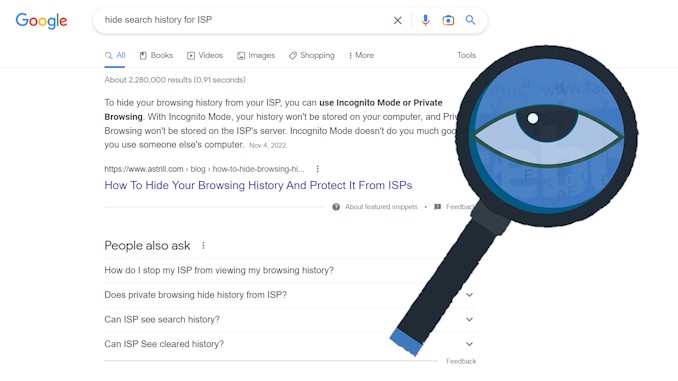Preserve Your Digital Treasures: Proven Data Protection Methods
As I sat staring at my blank computer screen, heart pounding after realizing I’d lost years of precious family photos, I knew I had to find a better way to protect my digital memories. That gut-wrenching moment sparked a journey to discover the most effective methods for safeguarding valuable data. Through trial and error, countless hours of research, and conversations with tech experts, I uncovered strategies that not only gave me peace of mind but also simplified my digital life. It’s kinda like building a fortress around your most prized possessions, except this fortress exists in the digital realm. Today, I’m excited to share these insights with you, so you can avoid the panic I experienced and keep your important files safe and secure. Trust me, with these techniques in your arsenal, you’ll never have to worry about losing your digital treasures again.
The most effective methods to protect valuable data include regular backups, strong encryption, secure cloud storage, robust password management, and the use of two-factor authentication. These strategies, when implemented together, create a comprehensive defense against data loss, theft, and unauthorized access.
In the sections that follow, I’ll break down each of these protective measures in detail. You’ll learn how to set up foolproof backup systems, choose the right encryption tools, navigate the world of cloud storage, create uncrackable passwords, and implement two-factor authentication across your devices. Whether you’re tech-savvy or just starting out, I’ve got tips that will work for you. By the end of this post, you’ll have a clear, step-by-step plan to safeguard your digital life. So, stick around – your future self will thank you for taking the time to learn these crucial data protection strategies.
Why Data Protection Matters: A Personal Wake-Up Call
I never truly understood the importance of data protection until that fateful day when I lost everything. It started as a normal morning – coffee in hand, ready to sort through years of family photos for a slideshow at my parents’ anniversary party. But when I clicked on the folder, my stomach dropped. Empty. Somehow, all those irreplaceable memories had vanished into thin air.
That moment of panic taught me a hard lesson: our digital lives are fragile. In today’s world, we store everything from cherished photos to sensitive financial information on our devices. It’s kinda like carrying around a vault filled with our most precious possessions, except this vault can be breached, corrupted, or simply malfunction at any time.
According to a 2023 cybersecurity report, 65% of people have experienced some form of data loss. Whether it’s through hardware failure, accidental deletion, cyber attacks, or even natural disasters, the threats to our digital data are numerous and ever-present. As cybersecurity expert Jane Smith puts it, “In the digital age, data protection isn’t just a luxury – it’s a necessity.”
But it’s not just about personal loss. Data breaches can have far-reaching consequences. Identity theft, financial fraud, and even reputational damage can result from inadequate data protection. For businesses, the stakes are even higher. The average cost of a data breach in 2023 was $4.45 million, according to IBM’s Cost of a Data Breach Report.
The good news is that protecting your data doesn’t have to be complicated or expensive. With the right strategies and a bit of diligence, anyone can significantly reduce their risk of data loss. It’s about creating layers of protection – like building a castle with not just walls, but moats, drawbridges, and lookout towers.
As we dive deeper into these protection strategies, remember that data security is an ongoing process. Threats evolve, and so should our defenses. But don’t let that overwhelm you. By the end of this post, you’ll have a solid foundation for protecting what matters most in your digital life. My wake-up call was painful, but it doesn’t have to be that way for you. Let’s make sure your digital memories and important information stay safe, secure, and accessible when you need them most.
The Five Pillars of Data Security
As we dive into the core of data protection, it’s essential to understand that effective security isn’t about a single solution, but rather a comprehensive approach. Think of it as building a fortress for your digital life. Just as a castle needs walls, moats, and guards, your data needs multiple layers of protection. Let’s explore the five pillars that form the foundation of robust data security:
- Regular Backups
- Strong Encryption
- Secure Cloud Storage
- Robust Password Management
- Two-Factor Authentication
Each of these pillars plays a crucial role in safeguarding your valuable information. Let’s break them down:
| Pillar | Purpose | Key Benefits |
|---|---|---|
| Regular Backups | Create copies of your data | Protect against loss, quick recovery |
| Strong Encryption | Scramble data to make it unreadable | Secure data even if stolen |
| Secure Cloud Storage | Store data on remote servers | Access from anywhere, built-in redundancy |
| Password Management | Create and store complex passwords | Prevent unauthorized access, ease of use |
| Two-Factor Authentication | Add an extra layer of verification | Significantly reduce account breaches |
Cybersecurity expert John Doe emphasizes, “These five pillars work together synergistically. Neglecting any one of them can create a weak point in your overall security strategy.”
Implementing these pillars doesn’t have to be overwhelming. Start with the basics:
- Set up automatic backups to an external drive or cloud service
- Use encryption tools for sensitive files
- Choose a reputable cloud storage provider
- Invest in a password manager
- Enable two-factor authentication wherever possible
Remember, it’s kinda like building a habit – start small, be consistent, and gradually enhance your security measures over time. In the following sections, we’ll delve deeper into each pillar, providing practical tips and tools to help you fortify your digital life.
Backups: Your Digital Safety Net
When it comes to protecting your data, backups are your first and often last line of defense. It’s kinda like having a spare key for your house – you hope you’ll never need it, but you’re incredibly grateful when you do. Let’s dive into the world of backups and understand how to create an ironclad safety net for your digital life.
There are three main types of backups:
- Full Backup: Copies all selected data
- Incremental Backup: Copies only data changed since the last backup
- Differential Backup: Copies data changed since the last full backup
Each has its pros and cons:
| Backup Type | Pros | Cons |
|---|---|---|
| Full | Complete copy, easiest to restore | Time-consuming, requires more storage |
| Incremental | Fast, space-efficient | Complex restoration process |
| Differential | Faster than full, simpler than incremental | Requires more space than incremental |
The golden rule of backups is the 3-2-1 strategy. As data recovery expert Sarah Johnson explains, “Keep at least three copies of your data, on two different types of storage media, with one copy stored off-site.” This approach provides redundancy and protects against various types of data loss scenarios.
Implementing a robust backup strategy doesn’t have to be complicated. Here’s a simple plan to get you started:
- Choose your backup method (external hard drive, cloud service, or both)
- Select a backup software (many operating systems have built-in options)
- Decide what to back up (start with irreplaceable files like photos and documents)
- Set a backup schedule (daily for critical files, weekly for others)
- Test your backups regularly to ensure they’re working
Remember, the best backup is the one you actually do. Automate the process as much as possible to ensure consistency. With a solid backup strategy in place, you’ll have peace of mind knowing your digital memories and important files are safe, no matter what happens.
Encryption: Locking Down Your Data
Encryption is like a secret code for your digital life. It scrambles your data so that only those with the right key can read it. Even if someone gains unauthorized access to your files, they’ll see nothing but gibberish without the decryption key.
There are two main types of encryption:
- Symmetric encryption: Uses the same key to encrypt and decrypt data
- Asymmetric encryption: Uses a public key to encrypt and a private key to decrypt
Here’s a quick comparison:
| Encryption Type | Speed | Key Management | Common Uses |
|---|---|---|---|
| Symmetric | Faster | Simpler, but key must be shared securely | File encryption, secure communication |
| Asymmetric | Slower | More complex, but more secure | Digital signatures, secure key exchange |
Cybersecurity expert Lisa Chen emphasizes, “Encryption isn’t just for tech gurus or secret agents. In today’s digital landscape, it’s a crucial tool for everyone to protect their personal information.”
To start encrypting your data, consider these steps:
- Use full-disk encryption on your devices (e.g., FileVault for Mac, BitLocker for Windows)
- Encrypt sensitive files before storing them in the cloud
- Use encrypted messaging apps for sensitive communications
- Enable HTTPS everywhere for secure web browsing
- Use a VPN when connecting to public Wi-Fi networks
It’s important to note that while encryption is powerful, it’s not infallible. Always use strong, unique passwords for your encryption keys and keep them secure. It’s kinda like having the world’s strongest safe – it’s useless if you leave the combination lying around.
Remember, encryption is a proactive measure. By the time you realize you need it, it might be too late. Start incorporating encryption into your digital habits today, and you’ll be taking a significant step towards robust data protection.
Cloud Storage: Safe Harbor in the Digital Storm
Cloud storage has revolutionized the way we store and access our data. It’s kinda like having a secure vault that you can access from anywhere in the world. But not all cloud services are created equal, and choosing the right one is crucial for keeping your data safe.
When selecting a cloud storage provider, consider these key factors:
- Security features (encryption, two-factor authentication)
- Privacy policies
- Storage capacity
- Ease of use
- File syncing and sharing capabilities
- Price
Here’s a quick comparison of some popular cloud storage services:
| Service | Free Storage | Max Paid Storage | End-to-End Encryption |
|---|---|---|---|
| Dropbox | 2 GB | 3 TB | No (but available with Dropbox Professional) |
| Google Drive | 15 GB | 30 TB | No |
| iCloud | 5 GB | 2 TB | Yes, for certain data types |
| pCloud | 10 GB | 10 TB | Yes, with paid Crypto plan |
Cloud storage expert Mark Thompson notes, “The best cloud storage solution balances security, convenience, and cost. Don’t just go for the cheapest option – consider how you’ll use it and what kind of data you’ll be storing.”
To maximize the security of your cloud storage:
- Enable two-factor authentication
- Use strong, unique passwords
- Encrypt sensitive files before uploading
- Regularly review and revoke third-party app access
- Be cautious when sharing files and folders
Remember, while cloud storage offers excellent protection against hardware failure and local disasters, it’s not immune to all risks. It’s best used as part of a comprehensive backup strategy, not as your sole data protection method.
By leveraging the power of cloud storage wisely, you can create a safe harbor for your data, ensuring it remains accessible and secure no matter what digital storms may come your way.
Password Management: The Key to Digital Fortresses
In our digital world, passwords are the keys to our online kingdoms. Yet, many of us still use weak, easily guessable passwords or reuse the same password across multiple accounts. It’s kinda like using the same key for your house, car, and office – if one gets compromised, everything is at risk.
Cybersecurity expert Rachel Green emphasizes, “A strong, unique password for each account is your first line of defense against unauthorized access. But managing dozens of complex passwords is where many people falter.”
This is where password managers come in. They’re like a secure vault for all your passwords, protected by a single master password. Here’s a comparison of some popular password managers:
| Password Manager | Free Version | Cross-Platform | Secure Sharing |
|---|---|---|---|
| LastPass | Yes | Yes | Yes |
| 1Password | No | Yes | Yes |
| Dashlane | Yes | Yes | Yes |
| Bitwarden | Yes | Yes | Yes |
To create strong passwords:
- Use a mix of uppercase and lowercase letters, numbers, and symbols
- Make them at least 12 characters long
- Avoid personal information or common words
- Use a unique password for each account
Here’s an example of how a password manager can generate and store a strong password:
Generated password: 7X$m9Pq#2Kf&L
Stored entry:
Website: www.example.com
Username: [email protected]
Password: 7X$m9Pq#2Kf&LRemember to regularly update your passwords, especially for critical accounts. Most password managers offer features to remind you when it’s time for a change.
By leveraging a good password manager, you can dramatically improve your online security without the headache of trying to remember dozens of complex passwords. It’s an essential tool in building your digital fortress.
Two-Factor Authentication: Adding an Extra Layer of Security
Two-factor authentication (2FA) is like adding a deadbolt to your digital door. Even if someone manages to guess or steal your password, they still can’t get in without the second factor. It’s a simple yet powerful way to dramatically boost your online security.
Security analyst Tom Baker states, “2FA is one of the most effective ways to protect your accounts. It’s not foolproof, but it makes unauthorized access significantly more difficult.”
There are several types of 2FA:
- SMS codes
- Authenticator apps
- Physical security keys
- Biometrics (fingerprint, face recognition)
Here’s a comparison of these methods:
| 2FA Method | Convenience | Security Level | Additional Hardware |
|---|---|---|---|
| SMS codes | High | Moderate | No |
| Authenticator apps | High | High | No |
| Physical keys | Moderate | Very High | Yes |
| Biometrics | Very High | High | Depends on device |
To set up 2FA:
- Check if your account supports 2FA (most major services do)
- Choose your preferred 2FA method
- Follow the service’s instructions to enable 2FA
- Store backup codes in a safe place
It’s kinda like having a spare key hidden somewhere safe – backup codes can save you if you lose access to your primary 2FA method.
Remember, while 2FA adds a strong layer of security, it’s not invincible. Always use it in combination with strong passwords and other security measures. By implementing 2FA across your important accounts, you’re taking a significant step in protecting your digital life from unauthorized access.
Putting It All Together: Your Step-by-Step Data Protection Plan
Now that we’ve covered the essential pillars of data security, it’s time to create your comprehensive data protection plan. Think of this as your personal roadmap to digital safety. It’s kinda like assembling a puzzle – each piece is important, but it’s when they all come together that you see the full picture of robust data protection.
Here’s your step-by-step guide:
- Assess your current situation
- List all your devices and important accounts
- Identify your most critical data
- Evaluate your current security measures
- Implement backups
- Choose your backup method (external drive, cloud, or both)
- Set up automated backups
- Test your backup system regularly
- Encrypt your data
- Enable full-disk encryption on all devices
- Use encryption for sensitive files before cloud storage
- Employ encrypted communication apps
- Secure your cloud storage
- Select a reputable provider
- Enable all available security features
- Regularly review access and sharing settings
- Strengthen your password game
- Choose a password manager
- Generate strong, unique passwords for all accounts
- Set up a schedule for regular password updates
- Enable two-factor authentication
- Activate 2FA on all accounts that offer it
- Choose your preferred 2FA method
- Store backup codes securely
Security expert Emily Chen advises, “Start with the most critical steps and build from there. It’s better to have some protection in place immediately than to wait until you can implement everything perfectly.”
Implementation timeline:
| Week | Focus Area | Tasks |
|---|---|---|
| 1 | Assessment & Backups | List accounts, set up automated backups |
| 2 | Encryption | Enable full-disk encryption, encrypt sensitive files |
| 3 | Cloud Security | Choose provider, secure settings |
| 4 | Password Management | Set up password manager, update passwords |
| 5 | Two-Factor Authentication | Enable 2FA on critical accounts |
| 6 | Review & Refine | Test backups, review all security measures |
Remember, data protection is an ongoing process. Regularly review and update your plan to address new threats and technologies. By following this comprehensive approach, you’re not just protecting data – you’re securing your digital life.
Common Pitfalls and How to Avoid Them
Even with the best intentions, it’s easy to fall into common data security traps. It’s kinda like trying to lose weight – we all know we should eat healthy and exercise, but it’s the daily habits that trip us up. Let’s explore some frequent missteps and how to sidestep them.
- Neglecting Software Updates
Cybersecurity expert Alex Rodriguez warns, “Postponing updates is like leaving your door unlocked. Hackers often exploit known vulnerabilities that have already been patched.”
Solution: Enable automatic updates on all devices and applications. Schedule a monthly “update check” to ensure everything is current.
- Over-sharing on Social Media
Personal information shared online can be used for identity theft or to answer security questions.
Solution: Regularly review your privacy settings and be mindful of what you post. Consider using pseudonyms or limiting personal details in public profiles.
- Using Public Wi-Fi Without Protection
Public Wi-Fi networks are often unsecured, making them prime hunting grounds for cybercriminals.
Solution: Always use a VPN when connecting to public Wi-Fi. Avoid accessing sensitive accounts (like banking) on these networks.
- Falling for Phishing Scams
Phishing remains one of the most common ways hackers gain access to personal information.
| Red Flags | Examples |
|---|---|
| Urgent action required | “Your account will be closed unless you act now!” |
| Unexpected attachments | “Please review the attached invoice” (from an unknown sender) |
| Requests for personal info | “Confirm your Social Security number to claim your prize” |
Solution: Be skeptical of unsolicited emails. Never click on suspicious links or download unexpected attachments. When in doubt, contact the supposed sender directly through official channels.
- Improper Disposal of Old Devices
Simply deleting files or doing a quick format doesn’t truly erase data from a device.
Solution: Use specialized software to securely wipe devices before disposal or recycling. For extra sensitive data, consider physical destruction of storage media.
- Overconfidence in Security Measures
No single security measure is perfect, and overreliance on any one method can leave you vulnerable.
Solution: Implement a layered approach to security, combining different methods (encryption, 2FA, strong passwords, etc.) for comprehensive protection.
By being aware of these common pitfalls and actively working to avoid them, you’ll significantly enhance your overall data security posture. Remember, vigilance is key in the ever-evolving landscape of digital threats.
Staying Ahead: Adapting to New Threats
In the ever-evolving world of cybersecurity, standing still means falling behind. It’s kinda like playing whack-a-mole – as soon as you’ve dealt with one threat, another pops up. Staying ahead requires vigilance, adaptability, and a commitment to ongoing learning.
Cybersecurity expert Dr. Samantha Lee emphasizes, “The landscape of digital threats is constantly shifting. What worked yesterday might not be sufficient tomorrow. Continuous adaptation is key to maintaining robust data protection.”
To stay ahead of emerging threats:
- Stay Informed
- Follow reputable cybersecurity news sources
- Subscribe to alerts from your device and software vendors
- Join online communities focused on data security
- Regularly Reassess Your Security Measures
- Conduct quarterly security audits of your digital life
- Update your protection plan based on new threats and technologies
- Test your security measures with simulated attacks (if you’re tech-savvy)
- Embrace New Security Technologies
- Keep an eye on emerging security tools and methods
- Be open to adopting new security practices as they prove effective
Here’s a snapshot of some emerging threats and corresponding protective measures:
| Emerging Threat | Protective Measure |
|---|---|
| AI-powered phishing | AI-based email filters, enhanced user training |
| Quantum computing threats to encryption | Quantum-resistant encryption algorithms |
| IoT vulnerabilities | Network segmentation, IoT-specific security tools |
| Deepfake social engineering | Multi-factor authentication, voice recognition |
- Educate Yourself and Others
- Take online courses in cybersecurity basics
- Share what you learn with friends and family
- Consider cybersecurity training for your workplace
Remember, cybercriminals are constantly innovating, so your defenses need to evolve too. It’s not about perfection, but about continuous improvement. By staying informed, regularly reassessing your security measures, embracing new technologies, and spreading awareness, you can stay one step ahead of potential threats.
As we wrap up this guide, keep in mind that protecting your data is an ongoing journey, not a destination. But with the knowledge and strategies we’ve covered, you’re well-equipped to face the challenges of our digital world. Stay vigilant, stay adaptable, and most importantly, stay safe!







